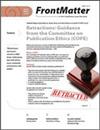Effects of Fire on Kangaroo Rats in the San Joaquin Desert of California
IF 0.5
4区 环境科学与生态学
Q4 BIODIVERSITY CONSERVATION
引用次数: 0
Abstract
Abstract. Fire can alter ecological communities, particularly those that are not fire-adapted, such as desert communities. We examined the effects of fire on rodent communities in the San Joaquin Desert of central California. Of particular interest were the effects on kangaroo rats (Dipodomys spp.) including 2 rare species, the giant kangaroo rat (D. ingens) and the short-nosed kangaroo rat (D. nitratoides brevinasus). Lightning caused multiple fires in arid scrub habitat in western Kern County in 1993. We trapped rodents at 7 sites along paired transects, with one transect in a burned area and one in a nearby unburned area. We conducted 5 trapping sessions from July 1993 to November 1995. Kangaroo rat abundance trends were similar between burn and control transects across the sessions. We also compared abundance of giant kangaroo rats between a trapping grid in an area subjected to controlled burning and a grid in a nearby unburned area on the Carrizo Plain in eastern San Luis Obispo County. Abundance trends were similar between the burned and unburned grids, although kangaroo rat numbers were maintained on the burn site over several sessions compared to the unburned site. We did not detect any adverse effects to kangaroo rat abundance from fire in the 2 study areas. Sheltering in burrows and storing seed underground may mitigate the effects of fire on kangaroo rats. Also, fire may actually benefit kangaroo rats by reducing groundcover density, thereby improving their mobility and predator detection. We do not recommend fire as a management strategy, however, because burning may adversely impact other species, kill shrubs, and erode air quality in a region where the air is chronically polluted. Resumen. Los incendios pueden alterar las comunidades ecológicas, especialmente aquellas comunidades desérticas que no están adaptadas al fuego. Examinamos el efecto de los incendios en las comunidades de roedores del desierto de San Joaquín en el centro de California, con particular interés en su efecto sobre las ratas canguro (Dipodomys spp.), incluidas dos especies raras, la rata canguro gigante (D. ingens) y la rata canguro de hocico corto (D. nitratoides brevinasus). Los relámpagos causaron múltiples incendios en hábitats de matorrales áridos en el oeste del condado de Kern en 1993. Atrapamos roedores en siete sitios a lo largo de transectos emparejados con un transecto en un área quemada y otro en un área cercana no quemada. Llevamos a cabo cinco sesiones de captura desde julio de 1993 hasta noviembre de 1995. Las tendencias de abundancia de ratas canguro fueron similares entre los transectos quemados y control en todas las sesiones. También comparamos la abundancia de ratas canguro gigantes entre un cuadrante de captura en un área sujeta a quema controlada y un cuadrante en un área cercana no quemada en Carrizo Plain en el este del condado de San Luis Obispo. Las tendencias de abundancia fueron similares entre los cuadrantes quemados y no quemados, aunque el número de ratas canguro se mantuvo en el sitio quemado durante varias sesiones de trampeo en comparación con el sitio no quemado. No detectamos ningún efecto adverso en la abundancia de ratas canguro debido al incendio en las dos áreas de estudio. El refugiarse en madrigueras y almacenar semillas bajo tierra, podría contribuir a mitigar los efectos del fuego en las ratas canguro. Además, el fuego podría beneficiar a las ratas canguro al reducir la densidad de la cubierta vegetal, mejorando su movilidad y detección de depredadores. Sin embargo, no recomendamos el incendio como estrategia de gestión, debido a que la quema podría afectar negativamente a otras especies, matar arbustos y erosionar la calidad del aire en una región donde el aire se encuentra crónicamente contaminado.火灾对加利福尼亚圣华金沙漠袋鼠的影响
摘要。火灾会改变生态群落,尤其是那些不适应火灾的群落,如沙漠群落。我们研究了火灾对加利福尼亚中部圣华金沙漠啮齿动物群落的影响。我们尤其关注火灾对袋鼠(Dipodomys spp.)的影响,其中包括两个稀有物种:巨型袋鼠(D. ingens)和短鼻袋鼠(D. nitratoides brevinasus)。1993 年,闪电导致克恩县西部干旱灌丛栖息地发生多起火灾。我们沿着成对的横断面在 7 个地点诱捕啮齿类动物,其中一个横断面位于被烧毁的地区,另一个位于附近未被烧毁的地区。从 1993 年 7 月到 1995 年 11 月,我们共进行了 5 次诱捕。在各次诱捕过程中,焚烧区和对照区的袋鼠数量趋势相似。我们还比较了圣路易斯奥比斯波县东部卡里索平原受控制燃烧地区诱捕网格与附近未燃烧地区诱捕网格之间的袋鼠数量。尽管与未焚烧地区相比,焚烧地区的袋鼠数量在多个时段内保持不变,但焚烧地区与未焚烧地区的袋鼠数量趋势相似。在这两个研究区域,我们没有发现火灾对袋鼠数量有任何不利影响。在洞穴中栖息和在地下储存种子可能会减轻火灾对袋鼠的影响。此外,火灾可能会降低地面植被的密度,从而提高袋鼠的活动能力和捕食者的探测能力,这实际上对袋鼠有利。不过,我们不建议将火烧作为一种管理策略,因为火烧可能会对其它物种造成不利影响,烧死灌木,并在空气长期污染的地区破坏空气质量。总结。火灾会改变生态群落,尤其是那些不适应火灾的沙漠群落。我们研究了火灾对加利福尼亚中部圣华金沙漠啮齿动物群落的影响,尤其关注火灾对袋鼠(Dipodomys spp.)的影响,其中包括两种稀有物种:巨型袋鼠(D. ingens)和短吻袋鼠(D. nitratoides brevinasus)。1993 年,闪电在克恩县西部的干旱灌木林栖息地引发了多起火灾。我们沿着成对的横断面在七个地点诱捕啮齿动物,其中一个横断面位于被烧毁的地区,另一个位于附近未被烧毁的地区。从 1993 年 7 月到 1995 年 11 月,我们共进行了五次诱捕。在所有诱捕过程中,焚烧区和对照区的袋鼠数量趋势相似。我们还比较了圣路易斯奥比斯波县东部卡里索平原受控制燃烧地区的诱捕四分区与附近未燃烧地区的诱捕四分区之间的大袋鼠丰度。尽管与未焚烧地区相比,焚烧地区的袋鼠数量在几次诱捕过程中都保持不变,但焚烧地区与未焚烧地区的袋鼠数量趋势相似。我们没有发现火灾对两个研究区域的袋鼠数量有任何不利影响。穴居和地下种子储存可能有助于减轻火灾对袋鼠的影响。此外,火灾可能会降低植被覆盖密度,提高袋鼠的活动能力和捕食者的探测能力,从而对袋鼠有利。不过,我们不建议将火烧作为一种管理策略,因为在空气长期污染的地区,火烧可能会对其他物种造成负面影响,杀死灌木,并破坏空气质量。
本文章由计算机程序翻译,如有差异,请以英文原文为准。
求助全文
约1分钟内获得全文
求助全文
来源期刊

Western North American Naturalist
环境科学-生态学
CiteScore
0.90
自引率
16.70%
发文量
39
审稿时长
>36 weeks
期刊介绍:
The Western North American Naturalist places neither restriction nor preference on manuscripts within the disciplines of the biological sciences. Each issue treats diverse taxa from the perspectives of various disciplines (e.g., ecology, population dynamics, behavior, systematics, anatomy, and physiology).
 求助内容:
求助内容: 应助结果提醒方式:
应助结果提醒方式:


